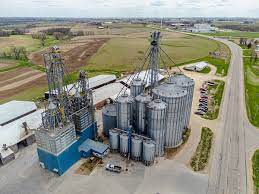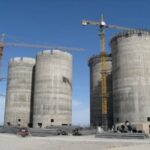Comparing Rope Access and Cradle System for Work At Height

Methodology
Rope Access: Rope access, also known as industrial climbing or abseiling, involves technicians using ropes, harnesses, and specialized equipment to access and work at heights. Workers descend or ascend using ropes, typically controlled by a two-rope system, and perform tasks while suspended in the air.
Cradle System: Cradle systems, also known as suspended access equipment or gondolas, consist of platforms or cages suspended from overhead tracks or cables. Workers ride in the cradle to reach elevated work areas, and the system can be maneuvered horizontally and vertically to access different parts of a structure.
Versatility
Rope Access: Rope access techniques are highly versatile and can be used to access virtually any part of a structure, including irregular or confined spaces. Technicians can navigate around obstacles and access areas that may be challenging to reach with other methods.
Cradle System: Cradle systems are suitable for accessing large vertical surfaces such as building facades or windows. While they offer good vertical access, they may have limitations in accessing areas with obstacles or irregular shapes.
Mobility
Rope Access: Rope access technicians have high mobility and can move freely along vertical, horizontal, and overhead surfaces. They can quickly reposition themselves as needed to perform different tasks or access various parts of a structure.
Cradle System: Cradle systems provide limited mobility compared to rope access. While they can move vertically and horizontally along designated tracks or cables, repositioning the system may require additional time and effort.
Safety
Rope Access: Rope access techniques are considered safe when performed by trained and certified technicians using appropriate equipment and procedures. Safety is enhanced by redundant safety systems, including backup ropes and harnesses, as well as rigorous training and adherence to safety protocols.
Cradle System: Cradle systems are generally safe when properly maintained and operated. However, safety risks may arise from equipment malfunctions, inadequate training, or adverse weather conditions. Safety features such as guardrails, emergency brakes, and fall arrest systems help mitigate these risks.
Cost
Rope Access: Rope access typically has lower upfront costs compared to installing and maintaining cradle systems. It requires minimal equipment and infrastructure, and labor costs may be lower due to the simplicity of the technique.
Cradle System: Cradle systems require initial investment in equipment, installation, and maintenance. While they may have higher upfront costs, they can be more cost-effective for long-term projects or situations where frequent access to elevated work areas is required.
Adaptability to Different Structures
Rope Access: Rope access techniques can be adapted to a wide range of structures, including buildings, bridges, towers, and industrial facilities. They are particularly well-suited for complex or irregular structures where traditional access methods may be impractical.
Cradle System: Cradle systems are best suited for vertical surfaces such as building facades, glass windows, or industrial chimneys. They may be less suitable for structures with irregular shapes or limited access points.
Environmental Impact
Rope Access: Rope access has minimal environmental impact since it requires no heavy machinery or infrastructure. Technicians can access elevated work areas with minimal disruption to the surrounding environment.
Cradle System: Cradle systems may have a greater environmental impact due to the installation of tracks, cables, or support structures. However, their impact can be mitigated through proper planning and adherence to environmental regulations.
Conclusion
In summary, both rope access and cradle systems offer effective solutions for accessing and working at heights, each with its own advantages and limitations. The choice between the two methods depends on factors such as the specific requirements of the project, the type of structure involved, safety considerations, and cost constraints.


